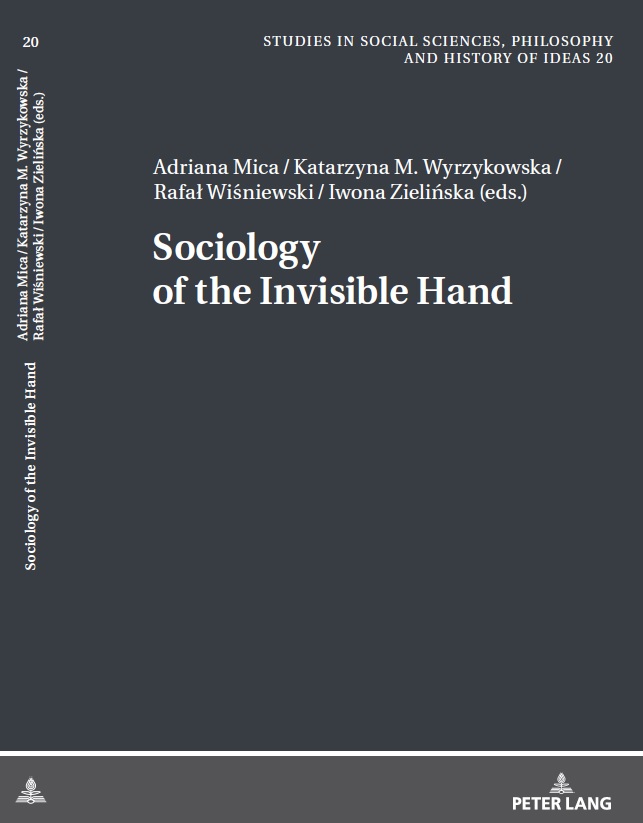 Sociology of the Invisible Hand
Sociology of the Invisible Hand
Series: Studies in Social Sciences, Philosophy and History of Ideas
Edited By Adriana Mica, Katarzyna M. Wyrzykowska, Rafał Wiśniewski and Iwona Zielińska, Peter Lang – Berlin ∙ Bern ∙ Bruxelles ∙ New York ∙Oxford ∙ Warszawa ∙ Wien 2018.
This book illustrates the applicability of the seminal and controversial metaphor of the «invisible hand» in modern sociological theory. It shows that sociologists have long been part of a field mainly associated with economists and political philosophers. Though unlike the framing that builds directly on Adam Smith, sociological theory focuses on undesirable and perverse outcomes. Furthermore, the sociological angle favors the explanation of invisible hand-like mechanisms as contingent upon social structures and broader processes. Thus, it goes beyond its classical formulation in terms of interdependence, interaction and aggregation of individual actions.
This book gathers contributions of remarkable authors who are linked directly either with the invisible hand metaphor, with the spontaneous order phenomenon or with the unintended consequences issue and aims to describe the traditional and contemporary applicability of the sociological framing of the invisible hand for social sciences. More information about this book is avilable HERE.
Tabel of content
Acknowledgements
Adriana Mica, Katarzyna M. Wyrzykowska, Iwona Zielińska and Rafał Wiśniewski: Three in One: Invisible Hand-Type Theories in Sociology
Part 1: Related, but different from the invisible hand
1.1 Craig Smith – The Invisible Hand and Political Philosophy
1.2 Frederick G. Whelan – “Contrary Effects” and the Reverse Invisible Hand in Hume and Smith
1.3 Jocelyn Pixley – Money versus System Integration Concept
1.4 Emma Tieffenbach – The Explanatory Power(s) of Unintended Consequences
1.5 Sebastian Giacovelli – The “Invisible Hand”: A Fiction with Real Consequences
1.6 Karl-Dieter Opp – The Interdependence of Spontaneous Order and Institutional Design: Table Manners, Daylight Saving Time, Language, and the Erosion of Institutional Design Under Communist Rule
Part 2: Even better than the invisible hand
2.1 Helmut K. Anheier – The Principle of the Hiding Hand Revisited
2.2 Bruna Ingrao – Invisible or Visible Hands? The Image of Markets in Contemporary
Macroeconomics
2.3 Zbigniew Szkop, Rafał Wiśniewski and Marta Sylla – Payment for Ecosystem Services as
a Potential Remedy for Market Failures
Part 3: The invisible hand, but not of the market
3.1 Francisco Fernandez de Castro and Raul P. Lejano – Program Implementation and the Invisible Hand of Community: The Experience of the Conditional Cash Transfer Program in Northern Mexico
3.2 Steve McDonald, Scott T. Grether, Kim S. Holland and Hannah McQueen – Serendipity in the Online Job Market
3.3 Mikołaj Pawlak and Michał Kotnarowski – The Invisible Hand of Social Capital: Evidence from the Polish Labor Market
3.4 Loïc Wacquant – Crafting the Neoliberal State: Workfare, Prisonfare and Social
Insecurity
Adriana Mica, Katarzyna M. Wyrzykowska, Rafał Wiśniewski and Iwona Zielińska: Invisible Hand in Sociology: Where Does It Take Us?